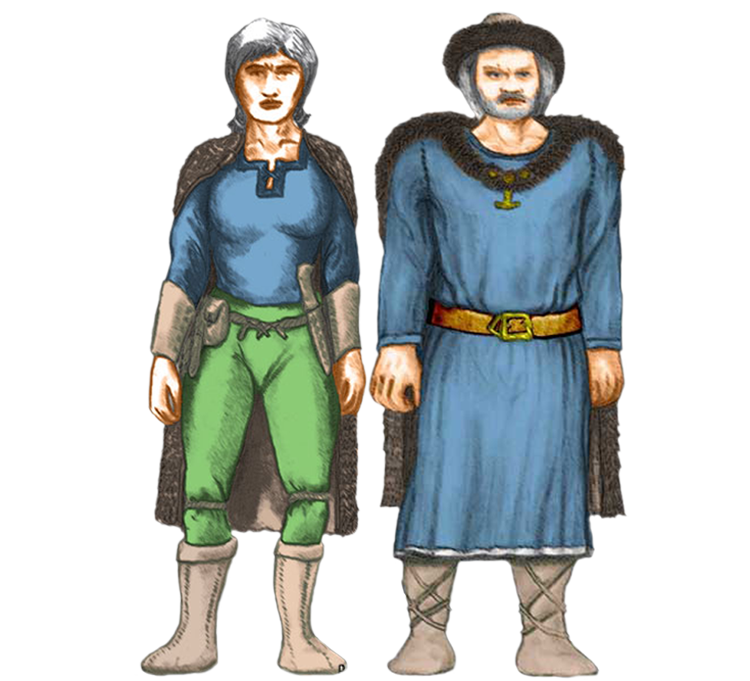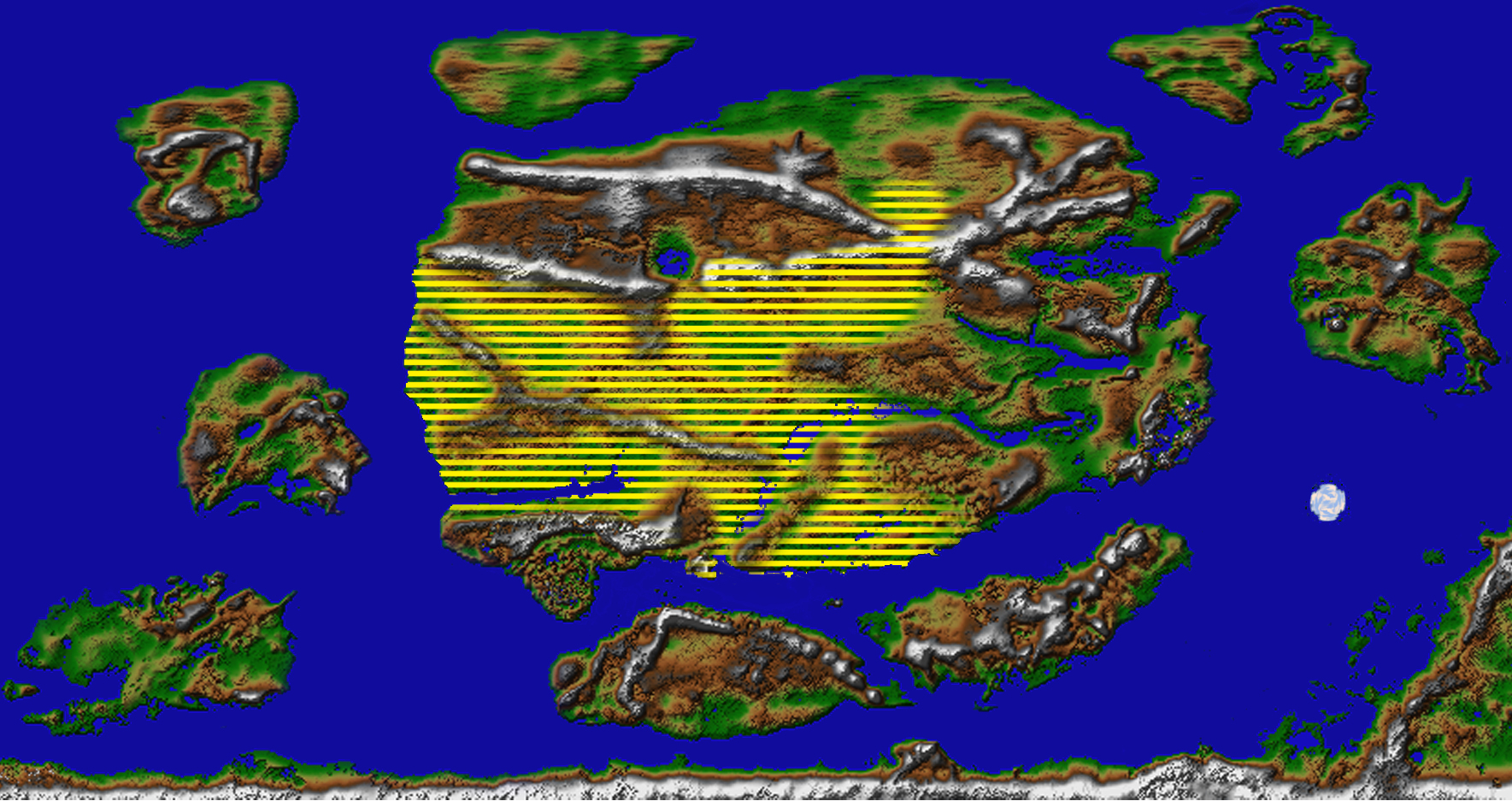Tatongōl

Appearance:
Build:
From slim to muscular to stocky.
Height: (cm)
Females: 175-180
Males: 180-195
Weight: (kg)
Females: 45-65
Males: 65-85
Lifespan: (yr)
Females: 130-135
Males: 125-130
Skin:
Golden to brown to pale-red.
Hair:
Black or brown.
Eyes:
Any.
Language:
- REALMISH
- NIMZAXIAN
- WESTRIL
- HIGH-ARLINIAN
- VULARIAN
- EAST-FJELLAS
- WEST-FJELLAS
- SOUTH-SKOGISH
- WEST-SKOGISH
- CENTRAL-SKOGISH
Culture:
- COASTAL
- GRASSLAND
- MOUNTAIN
- NOBILITY
- URBAN
Timeline:
2400 FA Founded the Tatongōl Empire
136 SA Court dissolving
268 Northern empire detached
400 Southern empire collapsed
Legend
“Children of Sky and Steppes is their historical foundation, but for thousands of years they have become ever distant.”
Description
In the sweeping tale of Races, the Tatongol emerge—a people whose spirit rides upon the winds of the grasslands, a testament to the harmony between humanity and the land that cradles them. With a way of life that mirrors the ancient bond between rider and steed, the Tatongol stand as an embodiment of nomadic resilience, wisdom, and strength.
Bound to the open sky and the boundless expanse of the great grasslands, the Tatongol live in harmony with nature, tending to their vast herds of livestock that roam the verdant plains. Nomads at heart, they traverse the land with an ease that reflects their deep connection to the earth beneath their feet and the winds that carry whispers across the horizon. Great monasteries, nestled within the embrace of the mountains, stand as symbols of their spiritual depth and contemplation.
Blessed with the skill of excellent riders, the Tatongol’s mastery of horsemanship is a tribute to their symbiotic relationship with these noble creatures. Their affinity for their steeds goes beyond the mundane, transcending into the realm of artistry, as they breed some of the finest horses. These steeds become extensions of themselves, their connection reflecting an unbreakable bond forged over generations.
The Tatongol’s origins are shrouded in whispers and legends. Scholars speculate about their ancestral ties to Midgard, the cradle of their civilization. For centuries, they held back the influences of other races, their spirit as resilient as the grasslands they called home. It’s said that the arrival of Wanderers and the rise of mighty Hordes spurred their westward migration, a journey that gathered momentum as the Triad Traders claimed vast tracts of grassland. Whispers persist that the High King's involvement accelerated the migration, fueled by the intricate dance of political manoeuvring and economic exchange.
Amidst this dance of change, the Tatongol organise themselves into a complex structure that spans castles, Villages, and Cities. Yet, beneath the surface, a shared allegiance ties them to a King, a bond that whispers of unity and loyalty. Their strength is not only found in their herding abilities and their prowess as strong workers but also in their excellence as warriors when atop their beloved Horses. Their skill in battle, honed through generations of tending to their steeds, marks them as a force to be reckoned with.
While the Tatongol’s reverence for tradition and the land is unwavering, their views on the High King institution are coloured with dissent. As individuals who value their autonomy, they deal with the institution’s representatives on their terms, a testament to their assertive spirit. Their pursuit of knowledge has led them to learn the Languages of their neighbours, Nimzaxian, High-Arlinian, and Vularian, an effort that has proven invaluable in times of need.
In a world where the land’s whispers blend with the echoes of history, where the dance of tradition meets the rhythm of change, the Tatongol stride forth—a symphony of resilience, unity, and autonomy. With every step they take, the very earth seems to vibrate, a tribute to their deep connection with the land, the skies, and the spirit of the open road.
Skjald El Mary
History
Considered the 8th oldest of the Indigenous tribes, they are offspring from mixing Fautyr and Neander. Despite still having the same traditions and beliefs, they are in fact two different cultural settings. One part, Children of Sky, lives in huge monasteries and nearby villages in the high mountain plateau of central Midgard. Meanwhile, the other part, Children of Steppes, lives a nomadic life in waggon trains and tents under the open sky throughout all of central and South/West Midgard.
So, one part lives with studies at ancient libraries, mining deep into mountains for precious raw material, farming local crops, crafting, and trade. The other part of their lives is fishing, crafting, and trading as they roam the great grasslands. They are excellent riders and breed some of the finest horses in The Realm.
Skjald Sigurd
Tatongol are thought by many Scholars to have been the original tribes of Midgard; they were for centuries able to hold the influence of the other Isles at bay. It’s said that it was the landing of Ye olde Zephyrs who stirred the land-claiming urge of other mighty Hordes who slowly forced them westward. That rumour aside, their migration was surely sped up when the Triad Traders started to claim and fence in vast fields of grassland, claims that the High King supported in exchange for financial support.
Skjald Sejrik
Their embraced ones—yes, of course they had such.
Khadu Namu, a 2nd generation vampire, is extraordinarily powerful, close to the original source of vampirism. His embrace occurred in ancient times of the dark age, making him a legendary figure among the Tatongol. Khadu Namu became a revered spiritual leader, embodying the ancient wisdom and traditions of the Tatongol culture and using his immense power to protect the Children of Sky and the Children of Steppes. Khadu Namu became a hidden but influential figure, guiding the Tatongol from the shadows.
Junmo Dungha, a 5th-generation vampire, was a warrior of great renown, embraced during a time of conflict to meddle with the tide in favour of the Tatongol. His prowess as a rider and fighter would be enhanced by his vampiric abilities, making him a formidable force on the battlefield. Junmo’s primary motivation was seeing himself as the guardian of the grasslands, using his enhanced abilities to fend off threats from other races. He formed a secretive band of elite Tatongol warriors, all aware of his true nature. This group is tasked with defending the Tatongol’s territory and undertaking critical missions to ensure their autonomy.
Hanato Ghurtu, a 7th-generation vampire, is relatively recent in his transformation. He was a younger, more dynamic figure, embraced during the time of the Deep Blue Tsunami. Hanato was an explorer, using his vampiric abilities to navigate the complexities of Tatongol’s interactions with vampires and other races. Hanato’s motivations were the pursuit of knowledge and the expansion of his influence among Tatongol’s. He also seeks to understand more about the vampiric condition and how it could be used to benefit his people, bridging the gap between the nomadic and settled aspects of Tatongol life.
Their existence drove stories of power struggles, secret alliances, and the quest for knowledge. Each vampire’s unique perspective and abilities added depth to the Tatongol’s cultural and historical narrative, making them key players in the broader events of our world.
Skjald Valgrif
Cartography

They are spread throughout the following Isles. and countries
Midgard: Ascal, Ebrar, Etain, Flaum, Fridor, Fril, Gaslug, Kustu, Ladris, Mumak, Sarova, Sloviit, Staria, Trov, Uhmzel
Skjald Ulrich
Organisation
Despite generally consisting of nomadic tribes, the Children of the Steppes spread throughout central Midgard. They still have tight connections between those and the old central administration and knowledge monestaries at the mountains between Bebram, Sarova, Uhmzel, and Fogwald. Their other part, Children of the Sky, upholds their knowledge and religious base in small villages or solitary huts surrounding extremely large monestaries. They are all sworn to a local Chieftain or Shaman, who are sworn to a regional leader. They have no shared political leader, but all swear to the ceremonial ‘Childrens Mother’ or ‘Childrens Father’ residing in a huge temple palace, Heavens Garden, in the central part of the mountains.
Currently, the Sunchild of the Sky ‘Mother’ is Yip Kaizu of Yar’Lung, a great Shaman. Able to Spiritcall, she generally prefers to let the dead rest and handle any problems with her two-handed mallet, ”em Divine Hands’. She generally warfares with a Snowlion or Windhorse but prefers peacetimes where she tends to study the spirit, mind, and body
The Children of the Steppes are some of the most exellent Horsebreeder in the World, but even so, their feathered and snowflake-patterned tinker-breed Horses bred and trained by the Tatongol tribes of Staria, North of the mountains are the most excusite of them all. These are so rare and tough that the normal herd of five horses per warrior can be handled by a single steed. So, if you see a Fatongol flock with but a few steeds, be aware that their mounts can outrun as good as anything.
Skjald Vinotis
Special
They are excellent herders, strong workers, and exquisite warriors when on horseback. They dislike the High King institution and are said to deal with its representatives as they see fit. It has been noted by some unlucky ones that their most outwards or distinct members have bothered to learn Nimzaxian, High-Arlinian, and Vularian, an effort they have found beneficial at crucial times.
Skjald Valgrif
Last Updated on 2024-05-20 by IoM-Christian
